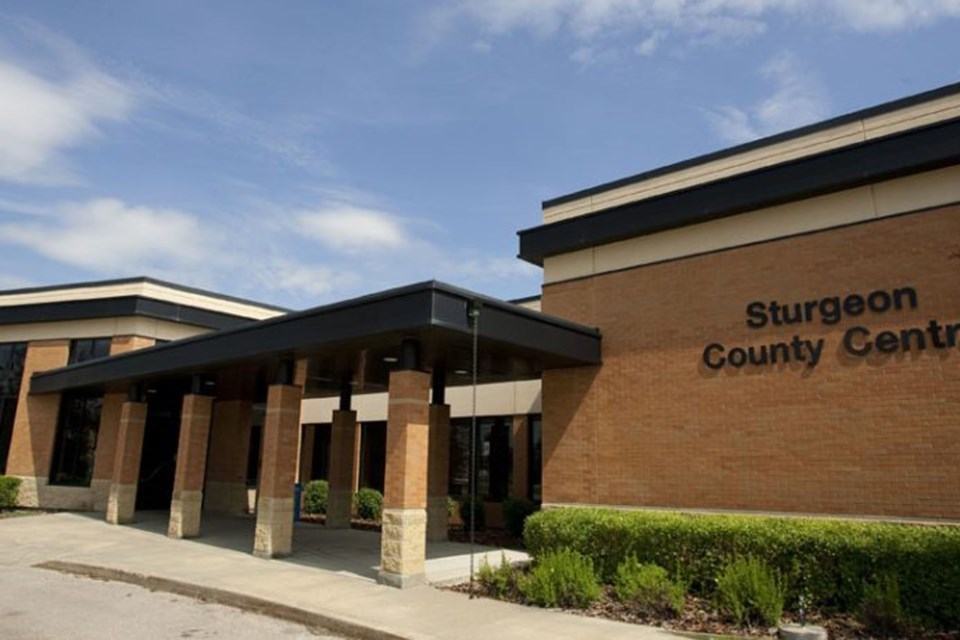Sturgeon County has set new COVID-19 records in the last few weeks, hitting new active case rates that were not seen in the previous three waves.
The county is much like the rest of rural Alberta, where communities are setting new high active case records during the fourth wave, which left them relatively unscathed during the first 18 months of the pandemic.
In the county, Mayor Alanna Hnatiw is genuinely concerned with the rising COVID-19 cases.
“When I see these numbers rise [there is] a concern as far as the exposure and increased risk to children,” Hnatiw said of kids going back to school and needing to participate in activities to stay mentally healthy.
On Wednesday, Sept. 22 the county clocked 155 active cases of COVID-19, the highest they have ever seen in the community. Morinville also hit a new high, with 98 active cases.
In the third wave Sturgeon County topped out at 108 cases on April 30 and in the second wave they hit 121 active cases on Dec 1, bringing the fourth wave in with 20 per cent more active cases than seen in the past.
Hnatiw said the highly contagious Delta variant has a part to play in why cases are going up in her community. And opening up for summer with no restrictions also resulted in increased spread.
Another factor may be a bit of a slower vaccine uptake in the community compared to some urban areas or the province overall.
The county has a vaccination rate for first doses at 65 per cent and some 57 per cent of the community has both doses of the COVID-19 vaccine.
Rates in the county are slightly lower compared to the rest of Alberta, which has a first-dose rate of 69.5 per cent of the total population, and a second-dose rate of 62.1 per cent, but much higher than many rural communities in the province, such as the community of High Level, which has a first-dose rate of 18.4 per cent and a second-dose rate of 15.3 per cent.
Hnatiw said the vaccination rate may point to the fact that they are "rurban" — both a rural and urban area — with close access to cities and communities, but still a rural community with farming and low population density.
For many in Sturgeon County, they may have just put off getting vaccinated. They may have a smaller social circle and spend a lot of time working on the farm, with few others around them, she said.
“Part of it is perhaps just not being a priority for people to make the time if they don't feel that there's a risk or exposure there,” Hnatiw said.
Right now is harvest season, with farmers working around the clock to get crops off, harvesting from the garden or finding hay for the cattle, which could impact vaccine uptake in the community.
But the mayor said it is important to prioritize self care, which includes getting a vaccine and taking care of mental health, and not let hesitancy or time constraints stop residents from getting the shot.
“We need to be there for those that depend on us and unfortunately I think where we're at right now is people are just busy, as well as we're exhausted,” Hnatiw said.
It can be tough to make difficult choices, such as whether to get vaccinated, when residents are overwhelmed and exhausted, “Which is why it's so important to reach out to health-care professionals to have those conversations and get the advice that you need around prioritizing your personal health care and that of your families,” the mayor said, adding that family, friends, and social media aren’t the best sources when it comes to getting information about vaccinations.
While there were 155 cases in the county on Wednesday, Hnatiw said, she frustratingly has very little information about where they are coming from, which hamstrings her ability to help find local solutions to the problems.
“We don't know where our outbreaks are. That is not granular information that Alberta Health Services provides to us, and it does handcuff our ability and our community's ability to be able to respond accordingly and understand where the risks are,” Hnatiw said.
A lack of contact tracing in schools is also causing problems for the community and the mayor only knows where there are COVID-19 cases in school from word of mouth and not from the health-care system itself.
Without the more detailed information, local community leaders can’t send more resources to areas that need it, such as getting a public-health nurse to address vaccine hesitancy in a local pocket with lower rates of vaccination or high rates of COVID-19.
“It would have perhaps been [prudent] to see some type of restrictions or more granular information being offered," she said, adding this may have further advanced an understanding of what was actually happening, "... because I just think people had a sense that it was over, and their guard was let down a little bit. And then you know the perfect storm of kids heading back to school at the same time, and here we are.”
On the Alberta Health website it is listed that the Poundmaker’s Lodge currently has an outbreak, along with Dolphin Child Development Centre — Bon Accord Out of School Care in Bon Accord.




